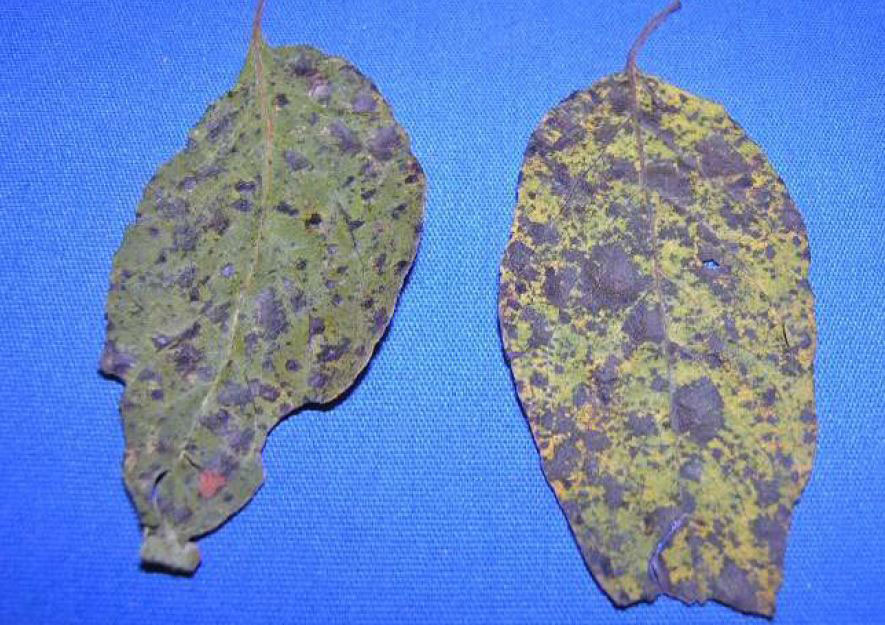Persimmon Leaf Spot
Contact
Plant Diagnostician
Phone: (479) 575-2727
Email: ssmith@uada.edu
Jason Pavel
Diagnostician
Phone: (479) 575-7257
Email: jpavel@uada.edu
Office:
University of Arkansas System Division of Agriculture
Cralley Warren Building
Room 16
2601 N. Young Ave.
Fayetteville, AR 72704
Persimmon Leaf Spot
Plant Health Clinic Disease Note Issue 24
Sherrie Smith and Jason Pavel

Native persimmons, Diospyros virginiana, are a common sight in woodlands and along fence rows. Persimmon forms a multi-trunked or single-stemmed deciduous tree to 25 ft. high and at least as wide. They make a handsome small ornamental tree in the landscape. Although native persimmon fruits are edible, most of the persimmons grown for their fruit are Oriental persimmons, Diospyros kaki. Oriental persimmons can be divided into two classes-astringent and non-astringent. Astringent varieties have tannins that disappear as the fruit ripens and softens. They will make your mouth pucker and give you a “dry mouth” feeling. Non-astringent persimmons, however, can be eaten when still firm and crisp, without any astringency. Our native persimmon is astringent. Whichever variety of persimmon is selected, persimmon fruits are an excellent source of vitamins A and C. They are consumed raw and in cookies, cakes, breads, puddings, and jams among others.
Persimmon Leaf Spot - What are the causes and symptoms?
A significant fungal pathogen that may affect yield is leaf spot caused by Pseudocercospora diospyricola. Symptoms begin as small necrotic spots that develop into angular lesions. Lesions may coalesce to form larger blotches on the leaf. Leaves turn yellow and fall from the tree prematurely. Severe infections can cause trees to defoliate in late August as the fruit begins to ripen. Problems related to defoliation include failure for fruit sugar to properly accumulate, and poor fruit ripening, biennial bearing tendencies with low overall yields, and increased vulnerability to freeze damage. Infection occurs at shoot expansion, leaf formation, and flowering in the spring.

How do I control Persimmon Leaf Spot?
Control can be obtained by applying a fungicide cover spray during full bloom and again 3 to 4 weeks later. Abound and Daconil Weather Stik are both labeled for control of Cercospora leaf spot in persimmon.
Take Aways:
• Clean up diseased leaves and stems.
• Begin fungicides full bloom and again 3-4 weeks later disease.
Follow us on Facebook!
This work is supported by the Crop Protection and Pest Management Program [grant no. 2017-70006- 27279/project accession no. 1013890] from the USDA National Institute of Food and Agriculture.